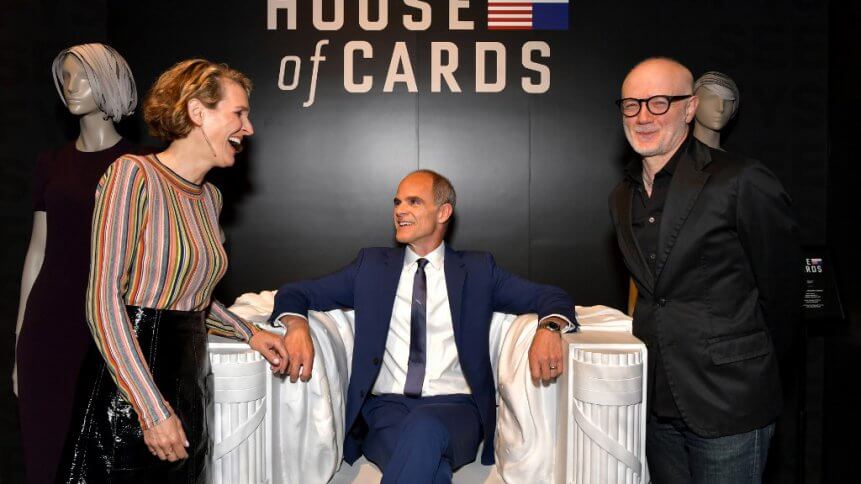Streaming service bundles are a new way to attract subscribers

- Netflix gained up to 16 million new users in the first three months of 2020 during the peak of the pandemic
- Wireless carriers are offering video streaming service bundles to attract new phone subscribers and retain existing customers
The streaming service trend has gained dramatic traction as the digital media landscape, once dominated by founding pioneers like Netflix and Amazon Prime, are now offering a myriad of content to users with rising stars like Apple TV+, Disney+, HBO Max, Peacock, and Quibi entering the market.
The demand for over-the-top (OTT) media services exploded when the global coronavirus pandemic forced millions of people to refrain from social gatherings and stringent lockdown measures heavily regulated their outdoor activities. The mass stay-at-home mandate saw an increase in the churn rate of US OTT services which hiked up to 41% in the first quarter of 2020 (during the peak of the pandemic), a 35% increase from last year, according to analyst firm Parks Associates.
“With movie theaters closed and cinematic productions and live events canceled or postponed, services are lacking some high-dollar content at the same time overall video consumption is accelerating,” Steve Nason, Research Director, Parks Associates remarked.
The research also reported that more than two out of every five households signed up for an OTT service free trial during the crisis, and 8% of households have tried four or more platforms. The study found that Disney+ and Apple TV+ were the two best performers, with 49% and 27% of households subscribing to the respective streaming services.
Similarly, home-entertainment giant Netflix gained nearly 16 million new users in the first three months of the year, which is almost double the number it gained in the final months of 2019. In April, Netflix saw its share price go up more than 30% as “investors bet on its ability to benefit from people spending more time indoors,” as reported on BBC.
Now, wireless carriers are riding on this traction and gaining a competitive edge by offering the best streaming service bundles to potential customers.
This week, Verizon, one of the telecom giants in the US, added Disney’s Hulu and ESPN+ to its free Disney+ offering. The full Disney+ Bundle that includes Hulu and ESPN+ is free for new customers that sign up for certain unlimited plans.
In its official statement, Frank Boulben, SVP Marketing and Products of Verizon Consumer Group, states: “We led the industry by giving customers Disney+ on us. Now we’re adding The Disney Bundle, which includes Disney+, Hulu and ESPN+, for more entertainment choices that appeal to a variety of interests. We can’t wait to see what customers choose to suit their needs.”
This was the result of a partnership between Verizon and Disney — Disney reported nearly a loss of US$5 billion for the third quarter with US$2 billion attributed to a loss in its parks, experiences, and products segment. The mass media company has suffered the full impact of the coronavirus outbreak with widespread closures of its theme parks, resort hotels, and down to the retail stores on its cruise lines.

A security guard checks anplatf empty square usually filled with visitors at Hong Kong Disneyland in Hong Kong on January 26, 2020, after the park announced it was shutting its doors until further notice over a deadly virus outbreak in central China. (Photo by Ayaka MCGILL / AFP)
The global health crisis has also slammed on the brakes for any upcoming TV or film productions. In this sense, the company’s media networks segment, complete with a library of beloved classics and pre-existing original content, is well-positioned to offset the losses from park experiences and merchandise sales.
“The launch of Disney+ kicks off a new era of streaming for The Walt Disney Company, bringing nearly a century’s worth of content from our iconic studios to consumers directly,” said Kevin Mayer, Chairman, Direct-to-Consumer & International, The Walt Disney Company. “We’re excited to share this moment with Verizon and bring Disney+ to the millions of customers across its award-winning wireless network.”
As users are tuning into subscription-based video streaming for entertainment, the collaboration between wireless carriers and streaming services is strategic in attracting consumers.
AT&T’s move to acquire Time Warner at US$85 billion indicates its new venture to develop a new streaming service and to keep phone subscribers from shifting to rival operators. Recognizing the ever-evolving media consumption on mobile phones and portable devices, the telecom titan is set to combine “the content and creative talent at Warners Bros., HBO and Truner” with AT&T’s “strengths in direct-to-consumer distribution” to offer “customers a differentiated, high-quality, mobile-first entertainment experience.”
Randall Stephenson, chairman and CEO of AT&T, added, “We’re going to bring a fresh approach to how the media and entertainment industry works for consumers, content creators, distributors, and advertisers.”
The competition is fierce as wireless carriers offer the best streaming service bundles. It’s too early to tell if this would cause a divide between users subscribing to different wireless carriers due to their preference for specific streaming services.
Presently, this marks the beginning of a new type of competition between wireless carriers backed with their streaming services offerings, whereby wireless carriers who used to compete by slashing prices are now presenting attractive streaming service package as the new dealbreaker for customers.










